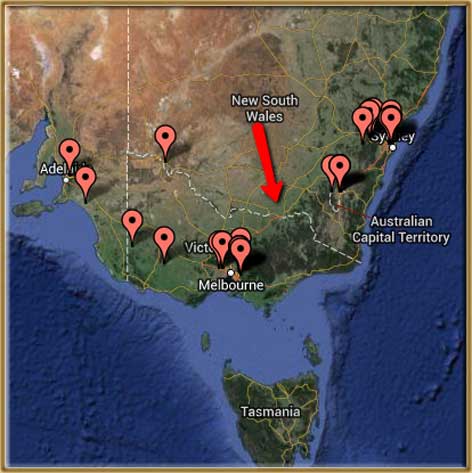Native bee scuffle - a special sight!
/I was amazed by some of the images and videos that Dr Ken Walker included in his presentations on native bees last week. Many were his own, but he also included some from 'citizen scientist' bee-watchers, and duly acknowledged their contributions. It only strengthened my resolve to keep improving my own skills in both photographing and keeping records of the bees I see.
Can you imagine my delight when just days after Ken's visit I noticed these small native bees perched on Dianella stems along the walking path in East Albury. The photo below includes Ralph's fingers, to give you some idea of their size.

My guess was that they were males, as they tend to be seen resting on stems like this, where the females often rest in their nests. There were four of them in close proximity and they seemed quite unconcerned about me pointing my lens at them.

Image: Can you spot the four bees in this photo?

Image: hanging on with their mandibles (mouth parts)

Image: and a side-on look at two bees; one is walking along the stem.
Then suddenly they were all on the move, and some appeared to 'attack' others. It's a rather strange sight to watch a bee hanging on by its mandibles (mouth parts) while resting, and letting its legs dangle mid-air or be tucked up out of use. But this was another thing again, as the ones on the stem waved their legs above their bodies seemingly trying to fend off the other bees. I caught some of this on video - so take a look for yourself.
A native bee scuffle! from Karen Retra on Vimeo.
I uploaded the video and some photos to BowerBird.org.au (see here) to see if I could get an ID and maybe find out more about the bees' behaviour.
Dr Walker identified them as Megachile ferox. He also let me know via email that although he would expect to find this species in our area, the reason it hadn't shown up on the PADIL website (where I'd looked to try to find the species) was that there weren't records of these bees here! He shared a map that showed dots representing their sightings around Melbourne and Canberra, but a big gap for around here.

Image: Dr Walker's screen shot, taken from the distribution map for Megachile ferox on PADIL.
Woo hoo, I'm chuffed to have put a new dot on the map! Or as Dr Walker put it, to have "filled an articificial distribution gap".
Oh, and if you're wondering what Dr Walker had to say about the 'scuffle', he confirmed these were male bees and they were likely "vying for prime positions for females to see them and be attracted".
I'm keeping watch too ... I sure hope to witness more bee action as the season progresses and to get some expert help to know what it is I've seen!


